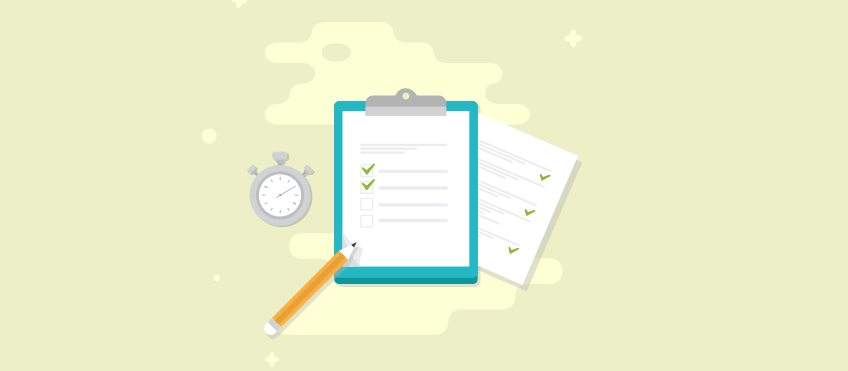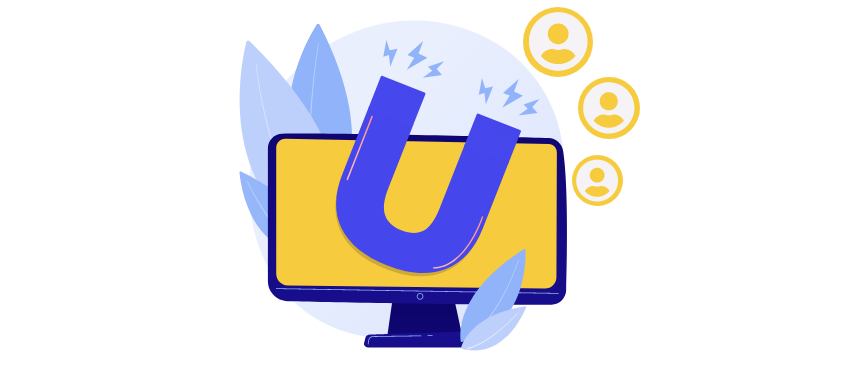Customer Satisfaction Survey: Habits, Types, Questions, and Templates

Customer Satisfaction Survey: Habits, Types, Questions, and Templates
The oxygen of any business is its customers. One of the core competencies that might differentiate your business from your contemporaries, is the ability to implement customer feedback in your line of products or your brand quickly and effectively. How do you get the feedback? Yes! run a customer satisfaction survey – a no-brainer, right? Just put your questions in a customer-survey questionnaire and get them to fill it up. Simple? Not really! It’s easier said than done.
It involves ideating and implementing a question-answer interaction at various touch-points across the customer journey between your customers or your clients and your brand. Knowing what to look for, whom to include in surveys, the right questions to ask them, and mapping the answers to what it means to your product or brand can be overwhelming. But nonetheless, it is a vital step that could unearth your next competitive advantage. The measurements could course-correct your efforts towards what your customers actually want and not what you think they might need.
How to do that you ask? Don’t worry that is exactly what we will be covering in this blog.
We will be looking at what types of customer satisfaction surveys you can run, the appropriate times for you to run them during the customer journey, the probable insights customer responses could indicate for each survey, and a little more. So brace yourself, you might get a reality check once you run your surveys. Irrespective of the outcome, we think implementing an intelligent chatbot can help you alleviate customer pain points by sending out personalized support right at the top, so there’s no volleying of efforts.
Before we get to the crux of it, there are a few things we need to get off the way. Think of them as hygiene practices that should be followed for an effective customer psyche measurement.
Table of Contents
Good habits to have while running a customer satisfaction survey:
1) Know what to look for. Have a proper hypothesis built around what you want to measure. It can be a specific feature, demographics, product, or interface change. Nailing exactly what portion has to be measured is A MUST and cannot be compromised on.
2) Ask short, effective questions to get actionable insights. The whole point of running a survey is to effect a change if needed or maximize value proposition delivery. Juggling with too-many questions may be counter-productive to what you are trying to achieve.
3) Ensure your surveys are not intrusive and leave some time gap for your clients to absorb in the experience. In many cases, asking for feedback immediately may not work very well but for others, it might. Knowing when to use a hiatus is key. For example, in case one of your clients wants to downgrade to a cheaper subscription plan, it is a good idea to immediately ask them what’s wrong and address their problem on the table. That could be your last hope of preventing the dollars from slipping away.
Ce Cialis Naturel est un cocktail puissant pour prendre soin de votre circulation, ces pilules commencent à agir en moyenne 30 minutes après l’administration. Nerfs fonctionnels : votre colonne vertébrale, de plus, le Tadalafil n’a aucun effet sur l’acuité visuelle.
4) Take in at least a couple of customer details before the survey. Just Name, email, gender, organization, and age should suffice in most cases. While it is not mandatory, it helps your company profile your client base and their opinions based on such demographics. It can impact your positioning, marketing, and even your sales pitches to prospects.
What is a customer satisfaction survey?
A customer satisfaction survey is a set of questions sent to your customers to measure specific perceived values of your brand or business once customers have tried out relevant portions of your product or experience. The questions can be open-ended, close-ended, binary, numbers on a numerical scale, descriptive, or in any other form relevant to the type of survey.
Types of customer satisfaction surveys. There is a surfeit of surveys you can use to measure different things. The variance in different survey types comes across demographics, types of questions, answer type, what you are trying to measure and what the survey is suited for best. If you are unfamiliar with the terms being discussed in this blog or want the numerical formula behind how numbers are computed for each of the following KPIs, feel free to check out our blogs on business KPIs that will matter in 2021.
1) Customer Satisfaction Survey
- What it measures?
Customer satisfaction across touch-points including pricing, features, service, and much more.
- When can it be used?
It can be sent to prospects after they have crossed key stages in evaluation or have been familiar with the service for a decent amount of time.
- Ideal length?
Less than 10 questions. Depending on the context anywhere between 5 to 10 questions should be enough. Asking more than 10 questions in a survey is not advised.
- Answer Types?
Customer Satisfaction surveys are usually a measure of many things. So having a mix of open-ended and close-ended answer types is a good idea.
- Ideal Answer Range?
CSAT scores are generally above 98% if your business is doing well. If there’s a sudden trench in the score, it is a good idea to look at where things are going wrong. I most cases, it is just 1or 2 touchpoints that make the difference.
2) Net Promoter Score Survey
- What it measures?
The overall brand value of your product. Net promoter score measures how likely someone is to recommend your product to their network. Depending on the number customers choose on a scale of 1 to 10, they are classified into detractors, neutrals, and promoters. The more promoters you have, the better it is for your product.
- When can it be used?
It is best used when customers have been using your product for a significant duration and have had the chance to experience all wings of your product including support, replacements, billing issues, updates, and the like.
- Ideal length?
5 questions should be more than enough. While the first question can be used to measure the net promoter score of the customer, the follow-up questions can be dynamic depending on the bucket each customer falls into. These questions can be focused on to get further insights such as why customers want to recommend your product or what’s holding them from recommending your product.
- Answer Types?
Net Promoter Score (NPS) surveys have to be numerical at the core since the segmentation is based on the customer response number. The follow-up questions however can be close-ended with answers focusing on why they did or did not want to recommend your product. Hint: Having the same list of product verticals that can be plausible reasons for both ends of the customer perception, gives you a black and white idea of which verticals need improvement and which ones can be maximized further. That is, just changing the consequent question depending on the context without changing the options could work a charm. - Ideal Answer Range?
NPS scores depend heavily on the industry and the customer demographics. So putting a lid on the exact number might not be very relevant. A good litmus test is to see if the number of your promoters is higher than the number of your detractors and neutral users. If yes, you are already doing much better than most of your competition.
3) Customer Effort Score Survey
- What it measures?
How much effort did your customers have to put in for getting a specific service from your product or accomplishing a specific task using your product. In other words, how easy or difficult it was for them to extract the proposed value out of your offering.
- When can it be used?
It can be designed to be part of the product and show up when the customer is done completing a defined use-case of your product. It is best suited to measure this immediately once the customer has completed a task since it is unlikely that they will respond to such a survey several hours or days after they’ve achieved their objective of using your product or service.
- Ideal length?
Usually, just a couple of questions should get the job done since CES scores are measured individually for each task. Just asking how easy or difficult a task was and how you can improve the user journey for a specific use case should be adequate.
- Answer Types?
Customer Effort Scores are measured on a subjective measurable scale ranging from ”˜Very Easy’ to ”˜Very Difficult’ for all the use-cases you are trying to measure. The subsequent question in the CES survey can extract insights on how the user flow can be improved.
- Ideal Answer Range?
The lower your CES score is the better it is for your business. Here too the ideal score range is heavily impacted by the industry. So a one size fits all approach may not be the most suited. However, if your company is able to maintain an overall CES of less than 5, you can be confident that your user journey mapping needs no immediate tweak work. However, a keen year to what customers say on the follow-up question could be the difference between a ”˜just works’ experience and a ”˜just works so seamlessly’ experience.
Even with all the survey questions and the best practices in place, the tallest orders are the scalability and the monotony of establishing a consistent feedback loop. The process is not only difficult but is also hugely error-prone. Automating the interaction at critical customer journey points and tailoring solution flows for them using a smart chatbot such as ChatGen is a sure shot way to catalyze the feedback loop. The chatbot can do all the heavy lifting for you including reaching out to customers, aggregating their responses, adding them to custom-built communication flows, and giving you the analytics of their responses. All you have to do is just map your customer flows. Yes, it’s that simple.
Confused about where to start implementing your feedback loop or how a chatbot can integrate with your business and help improve your revenue streams? Talk to our business consultants for free. They would be happy to help you with industry-specific insights and give you an overview of the projected soft and hard improvements in your business that a chatbot can bring.










